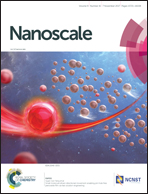Boosting up the electrical performance of low-grade PEDOT:PSS by optimizing non-ionic surfactants†
Abstract
Although PEDOT:PSS has already been applied to various electronic devices, commercialized PEDOT:PSS products having high conductivity are expensive, which is a considerable burden on device manufacturing. In this study, we optimize non-ionic surfactants mixed in a PEDOT:PSS solution to upgrade a low-grade product of low conductivity to the level of a high-grade product of high conductivity. This study systematically investigates the phase diagram, morphology, conductivity, and mechanical stability of the PEDOT:PSS films according to the hydrophilicity of non-ionic surfactants. This study reveals that the conductivity of the PEDOT:PSS film varies greatly depending on the chemical structure of the surfactant and its weight fraction in the thin film. Under the optimum conditions (chemical structure and weight fraction) of the surfactant, the conductivity of the low value product could be improved to the conductivity level of the high value product. The electrical properties of the films were excellently stable even under the extreme cyclic bending tests at a bending radius of 1.5 mm. The low-grade and high grade products showed the same electrical performance when they were used in the Ag nanowires/PEDOT:PSS hybrid transparent electrodes. The results are expected to be applied immediately not only in the laboratory but also in various industrial fields.



 Please wait while we load your content...
Please wait while we load your content...